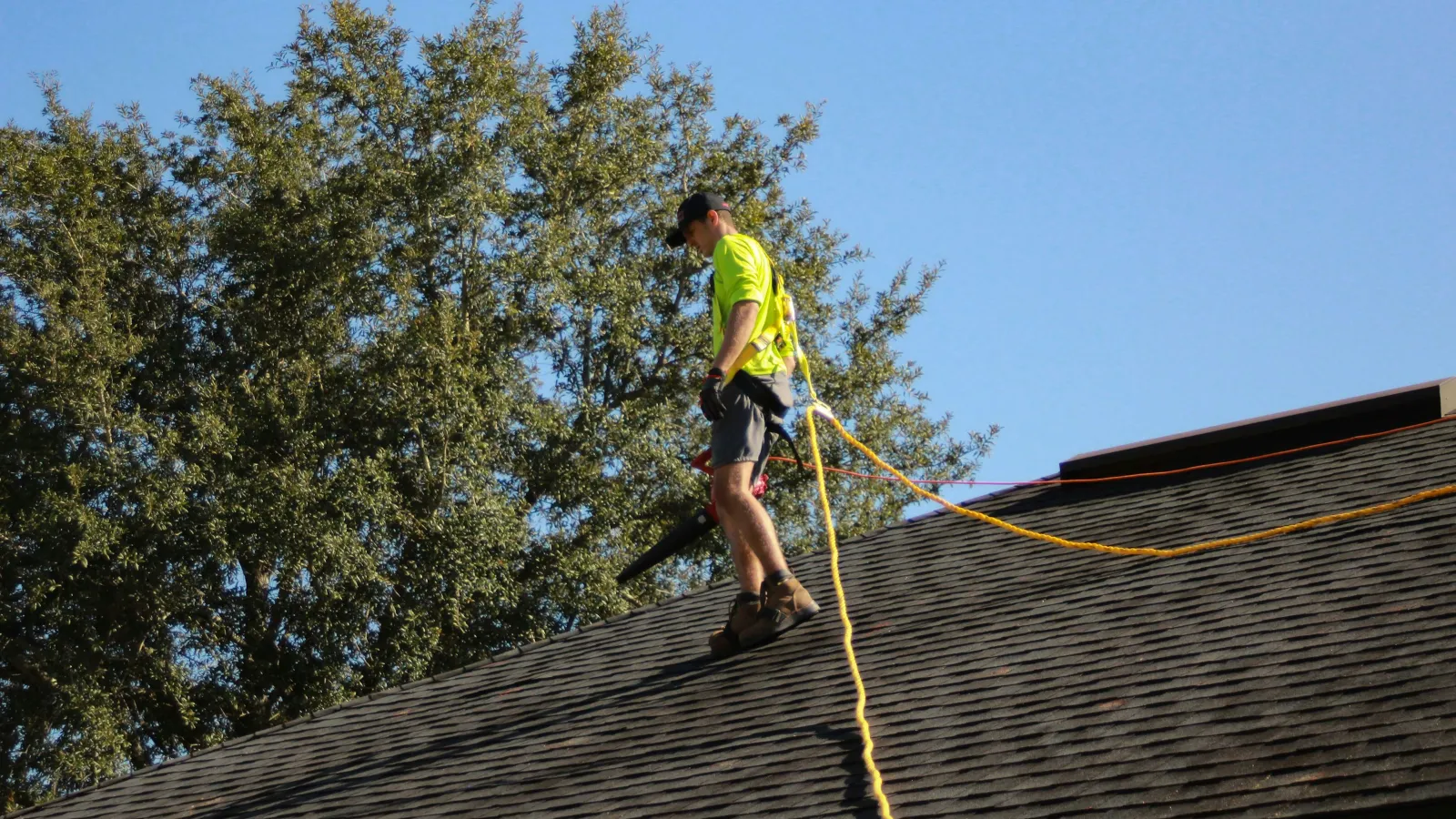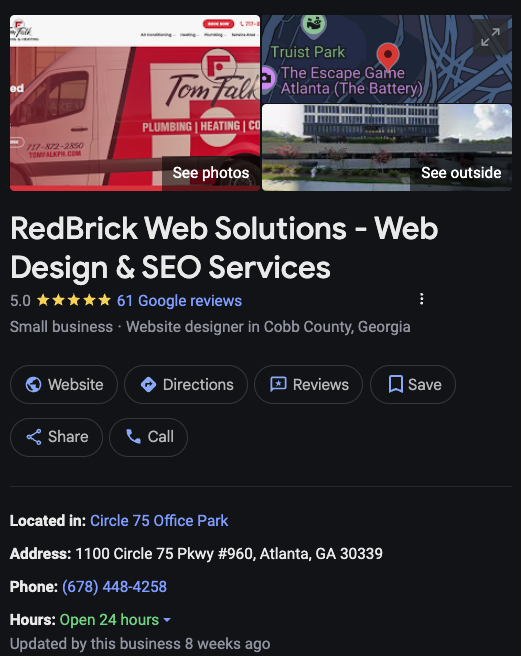
The Ultimate Guide to SEO for Roofers: 2025 by RedBrick
Book A Website Audit
Why SEO Matters for Roofers in 2025
Effective SEO not only enhances your visibility online but positions your roofing company as a trusted, authoritative provider in your community.
This guide by RedBrick Web Solutions outlines proven, updated strategies designed specifically for roofers to dominate local searches, attract qualified leads, and convert website visitors into loyal customers.
Google Business Profile (GBP) Optimization

A well-optimized Google Business Profile (GBP) is foundational for roofers. Claim and complete your profile meticulously. Provide consistent information, including address, phone number, website URL, and operating hours,that match your website exactly. Google highly values consistency across platforms, rewarding it with better visibility.
Select accurate primary and secondary categories relevant to roofing. Fill out detailed service descriptions including specifics like "Emergency Roof Repairs," "Storm Damage Restoration," or "Roof Inspections." Regularly update your GBP with high-quality, authentic photos showcasing recent roofing projects, your team in action, or satisfied customers' testimonials.
Engage proactively with the GBP Q&A section. Regularly answer questions thoroughly and use this feature to integrate keywords and local phrases naturally. GBP Insights provides analytics on how customers find you; use these insights to refine your content and keyword strategies continually.
Mastering Local Citation Management
Consistent Name, Address, and Phone number (NAP) data across all directories is essential. Discrepancies, even minor ones, can harm your SEO rankings. Regularly audit your citations using tools like Moz Local or BrightLocal.
Claim or update your profiles on critical platforms such as Yelp, Bing Places, Angi, BBB, HomeAdvisor, and relevant local or niche directories specific to roofing. Optimize each listing fully, include detailed service descriptions, photos, and correct categories. Immediately correct outdated or duplicate listings to maintain trust with search engines and prospective customers alike.
Advanced On-Page SEO for Location-Specific Pages
If your roofing services span multiple cities, develop individual, dedicated pages for each area. Avoid template-driven content; instead, produce unique, location-specific narratives mentioning local landmarks, neighborhoods, or typical roofing challenges encountered in those regions. Incorporate testimonials from local customers to reinforce authenticity.
Optimize these pages by including city names strategically in titles, headings, meta descriptions, and throughout the body content naturally. Embed maps showing your service radius or location pins to reinforce your geographic relevance to search engines and customers alike.
Leveraging Schema Markup for Enhanced Visibility

Implement structured data using Schema.org to clarify your business details to Google. Use LocalBusiness or specific RoofingContractor schema types. Clearly indicate your NAP, hours, and geographical coordinates. Additionally, leverage Service schema markup for individual roofing services, specifying areas served to strengthen your local relevance.
Review and FAQ schemas are particularly valuable. Marking up customer testimonials or common roofing FAQs can help secure rich snippets in search results, making your listings more attractive and informative, thus improving click-through rates.
Prioritizing Technical SEO and Mobile User Experience
With Google's mobile-first indexing, ensuring your roofing website loads swiftly and operates seamlessly on mobile devices is paramount. Aim for load speeds under three seconds, compress images, leverage browser caching, and minimize file sizes. Prioritize a clean, responsive design to facilitate easy navigation and quick actions, like requesting quotes or calling directly via click-to-call features.
Regularly test site speed and usability through tools such as Google's Mobile-Friendly Test and PageSpeed Insights. Maintaining HTTPS security and addressing technical errors promptly (broken links, missing tags, large files) are critical for maintaining SEO integrity.
Creating Locally Relevant Content and Authority
Build authority and visibility through consistently published, high-value local content. Blog about regional roofing concerns, seasonal maintenance tips ("Preparing Your Roof for Denver's Winter"), or recent projects ("Historic Roof Restoration in Downtown Savannah"). Include clear calls to action encouraging consultations or roof inspections.
Develop case studies or success stories featuring satisfied local customers. Leverage community engagement through sponsorships or collaborations with local businesses, earning valuable backlinks and community recognition. Such genuine connections help reinforce your local authority and credibility.
Strategic Use of Customer Reviews & Engagement
Customer reviews significantly impact local SEO rankings. Actively solicit reviews after project completions, providing direct links to your GBP. Encourage feedback on other reputable platforms like Yelp or Facebook. Respond thoughtfully to all reviews, positive responses showcase appreciation, while professional replies to negative feedback demonstrate your commitment to customer satisfaction.
Feature authentic user-generated content (UGC) prominently on your site. Embed customer testimonials, highlighting keywords naturally embedded within their feedback. Foster engagement by encouraging clients to share before-and-after images of your roofing projects on their social media channels, increasing your online visibility organically.
Internal Linking Best Practices
Effective internal linking boosts SEO by helping Google index your content efficiently while enhancing user navigation. Cross-link related content, for instance, service pages to specific city landing pages and vice versa, clearly using descriptive anchor text (e.g., "Metal Roofing in Austin"). Maintain a logical, hierarchical site structure, providing breadcrumb navigation for easy orientation.
Create a dedicated "Service Areas" page or interactive map clearly linking to each city-specific page. Regularly audit your website to prevent orphan pages (pages without internal links) and ensure every page receives appropriate link authority and visibility.
Conclusion: SEO as an Ongoing Investment
In 2025, SEO remains a dynamic and crucial component for roofing businesses aiming to thrive locally. Continuously monitor, test, and refine your SEO practices to adapt to evolving search engine algorithms and consumer behaviors.
Implementing these comprehensive strategies will position your roofing company prominently in local search results, driving more qualified leads and establishing your firm as the go-to roofing expert in your region.
By consistently applying these SEO principles, roofers can significantly enhance their visibility, credibility, and customer reach, ensuring sustained business growth well into the future.
Roofing SEO FAQs
What is Roofing SEO and why is it important?
Roofing SEO refers to search engine optimization strategies specifically tailored for roofing businesses. It helps your roofing company rank higher on search engines like Google, making it easier for potential customers to find your services online. This leads to increased website traffic and more qualified leads.
How can SEO help my roofing business grow?
SEO improves your online visibility, drives targeted traffic to your website, and positions your business as a trusted authority in the roofing industry. This results in more inquiries, higher conversion rates, and ultimately, increased revenue.
Do I need to create content for my roofing website?
Yes. Creating informative and engaging content such as blog posts, FAQs, and service pages helps attract and educate potential customers while improving your website's search engine rankings.
Is local SEO important for roofing businesses?
Absolutely. Most roofing customers search for services near them. Optimizing for local SEO ensures your business appears in local search results and Google Maps, driving more nearby leads to your company.